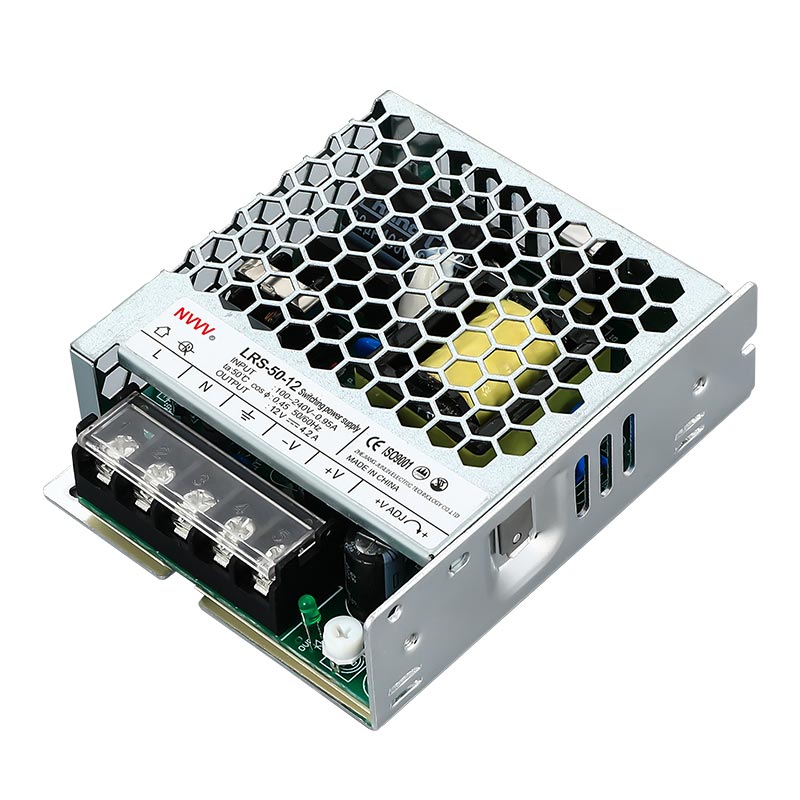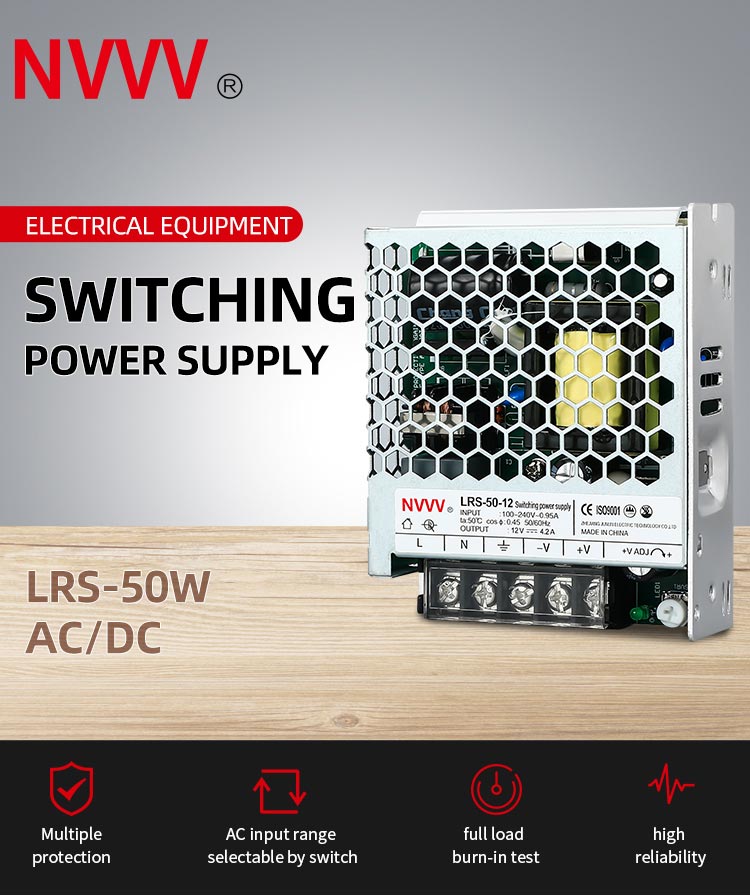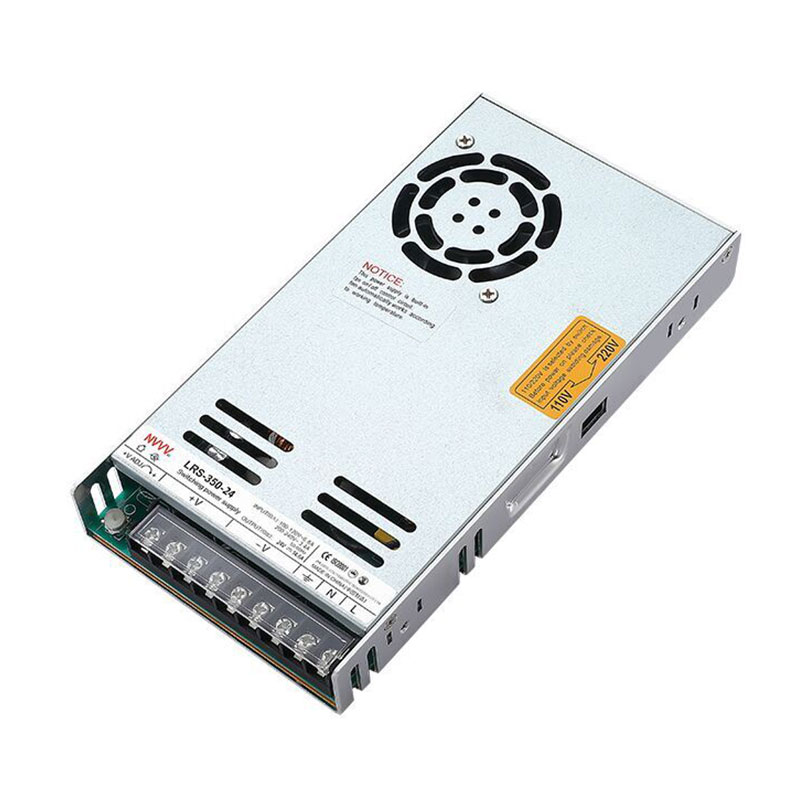What is a switching power supply and Do I need a switching power supply?
A switching power supply (SMPS) is an electronic device that uses high-frequency switching technology to achieve power conversion. It can efficiently convert AC or DC power into stable DC power to power various electronic devices. Compared with traditional linear power supplies, switching power supplies are known for their small size, high efficiency and wide range of applications. They are an indispensable key component of modern electronic products.
What is a switching power supply?
A switching power supply is an electronic power supply device that regulates input power through high-frequency switching devices to efficiently convert power to the target output. It can generate stable DC output from DC or AC input and is often used in electronic devices with complex power supply requirements, such as personal computers, battery chargers, medical equipment and communication systems.
A switching power supply has the following core features:
Efficient power conversion
It works at high frequencies through a switching regulator, greatly reducing the loss of power during the conversion process.
Output stability
The internal voltage stabilization circuit ensures the stability of the output voltage and current, and can maintain a constant output regardless of load changes.
Electrical isolation protection
It separates low-voltage equipment from high-voltage input power through transformers and other isolation devices to prevent short circuits or overloads from damaging the equipment.
Working principle of switching power supply
The core working principle of switching power supply is based on the on-off operation of high-frequency switch, which mainly includes the following steps:
Rectification and filtering
Convert the input AC power into DC power, and use the filtering circuit to eliminate ripples.
High-frequency conversion
The voltage is increased or decreased through the high-frequency switching of the switching device (usually thousands to tens of kilohertz).
Feedback control
The output voltage is monitored in real time by the feedback circuit, and the output voltage is ensured to be stable by adjusting the switching duty cycle.
Through such a step-by-step working process, the switching power supply achieves efficient energy transfer from input to output.
Configuration of switching power supply
The design of switching power supply is usually based on three main topological structures, each of which is suitable for different demand scenarios:
Buck
The buck circuit reduces the input voltage, and the output voltage is always less than the input voltage. This configuration is suitable for low-voltage devices, such as microcontrollers and sensor power supplies.
Boost
The boost circuit increases the input voltage, and the output voltage is higher than the input voltage. This is widely used in scenarios where high-voltage output is required, such as LED lamp driving.
Buck-Boost
This configuration combines buck and boost functions, and the output voltage can be higher or lower than the input voltage, but the polarity is reversed. This flexibility is suitable for devices with diverse power requirements.
Although these three topologies differ in function, the core components (such as transistors, inductors and diodes) are the same, and the different configurations are only manifested in different arrangements of the components.
Advantages of Switching Power Supplies
Switching mode power supplies are widely used because they have the following significant advantages in performance and adaptability:
High efficiency
Switching power supplies are typically as efficient as 80%-95%, far exceeding linear power supplies. This means less energy waste and is suitable for devices with strict efficiency requirements, such as communication base stations or solar energy systems.
Small size
Thanks to the high-frequency operating mode, switching power supplies can design transformers and other key components smaller. This compact design is crucial in space-limited devices (such as laptops and smartphones).
Strong flexibility
Switching power supplies can meet the voltage and current requirements of different devices by adjusting the topology and component parameters. For example, some medical devices require multiple output voltages, and switching power supplies can easily achieve this by adding windings.
Environmental adaptability
Switching power supplies can operate over a wide input voltage range and have good adaptability to grid fluctuations, making them particularly suitable for areas with unstable power supply conditions.
Cost-effectiveness
Although the initial cost may be slightly higher than that of linear power supplies, high efficiency and low energy consumption make switching power supplies more cost-effective in long-term use.
Comparison between switching power supplies and linear power supplies
The main difference between linear power supplies and switched mode power supplies lies in the different conversion methods:
Conversion principle
Switching power supplies use the opening and closing of high-frequency switches to achieve voltage regulation, and have higher working efficiency.
Linear power supplies achieve output voltage control by linearly regulating current, but generate a lot of heat in the process and have low efficiency.
Volume and weight
Switching power supplies are small in size and light in weight due to the use of high-frequency transformers.
Linear power supplies require larger low-frequency transformers, which are relatively large in size and weight.
Application scenarios
Switching power supplies are suitable for portable devices with high efficiency and space requirements.
Linear power supplies are suitable for occasions that are particularly sensitive to electromagnetic interference (EMI), such as audio amplifiers.
Application scope of switching power supply
Switching power supply covers almost all areas of modern electronic equipment, including but not limited to:
Consumer electronics
Mobile phones, laptops, tablets and other devices have high requirements for compactness and efficiency, and switching power supply can meet these requirements.
Industrial equipment
Industrial automation equipment, robots and motor control systems rely on efficient and stable power supply, and the high power density of switching power supply is an ideal choice.
Medical equipment
Medical testing instruments, imaging equipment, etc. have strict requirements on power supply reliability, and switching power supply provides stable and diverse power output.
New energy
Solar inverters and electric vehicle charging equipment require efficient power conversion, and switching power supply can achieve efficient use of energy.
Do I need a switching power supply?
If you are looking for an efficient, compact and flexible power supply solution, switching power supply is undoubtedly an ideal choice. Especially in the following cases, switching power supply has more advantages:
Your device requires multiple voltage outputs, such as some medical or industrial applications.
Space and weight constraints are key considerations, such as portable devices.
You pursue efficient energy utilization, reduce energy waste and heat generation.
The wide applicability of switching power supply makes it occupy an irreplaceable position in many fields from consumer electronics to professional equipment.
Conclusion
Switching power supply has become the preferred solution for powering modern electronic devices due to its high efficiency, compact design and flexible application range. Whether it is to provide reliable power for home devices or to provide stable support for complex industrial systems, switch mode power supply can meet the needs of different scenarios. If you need a power supply device that combines performance and reliability, switching power supply is undoubtedly the best choice.










